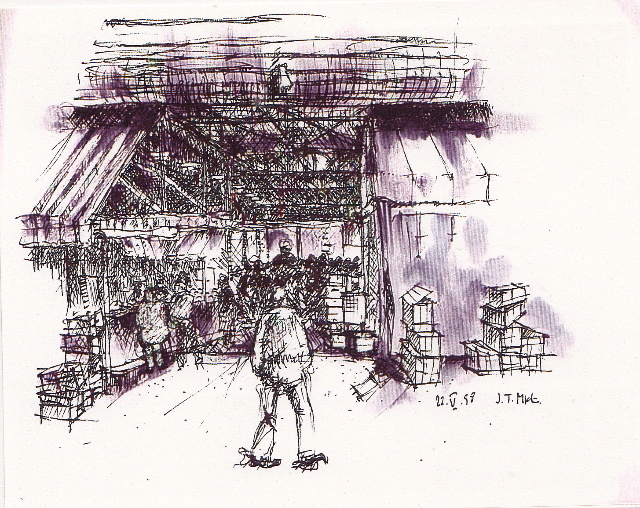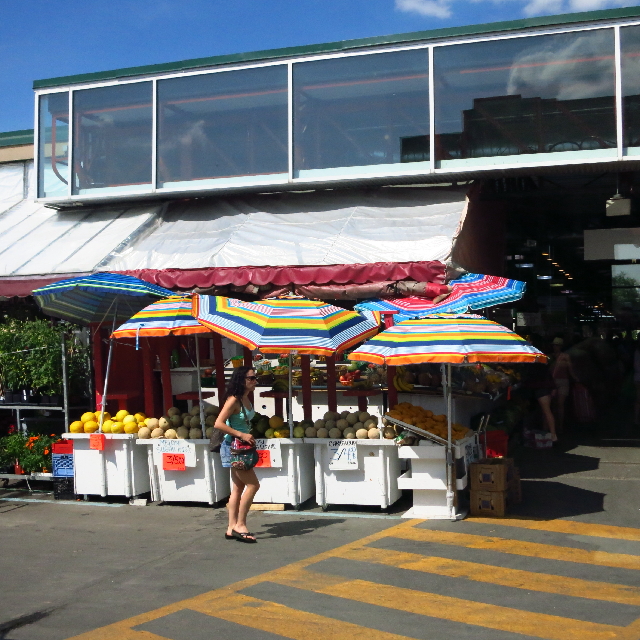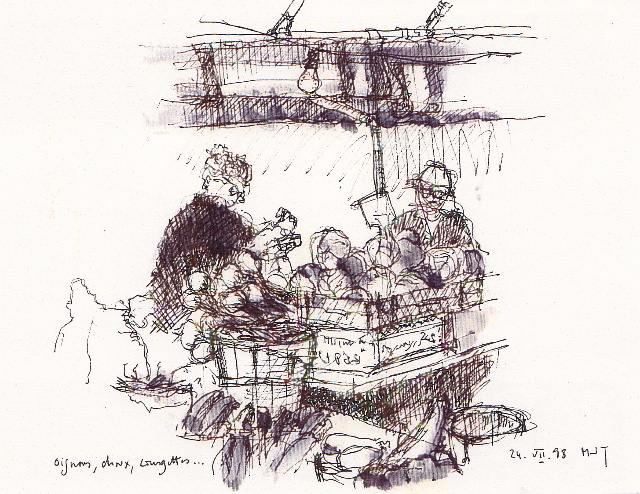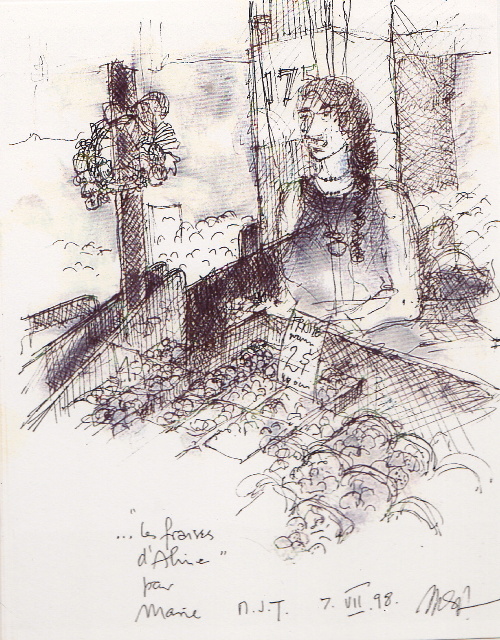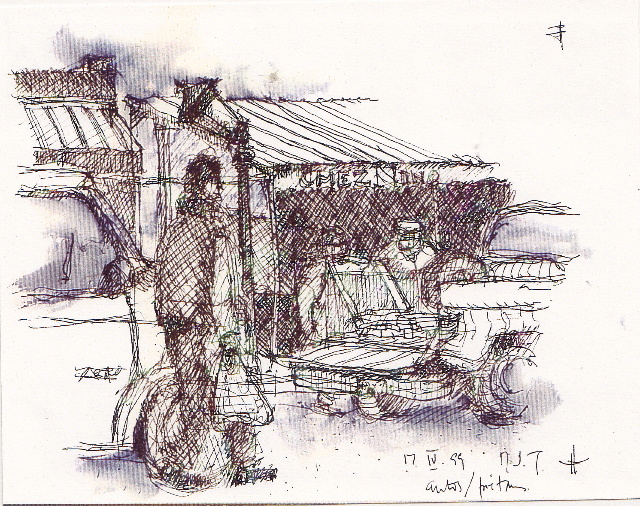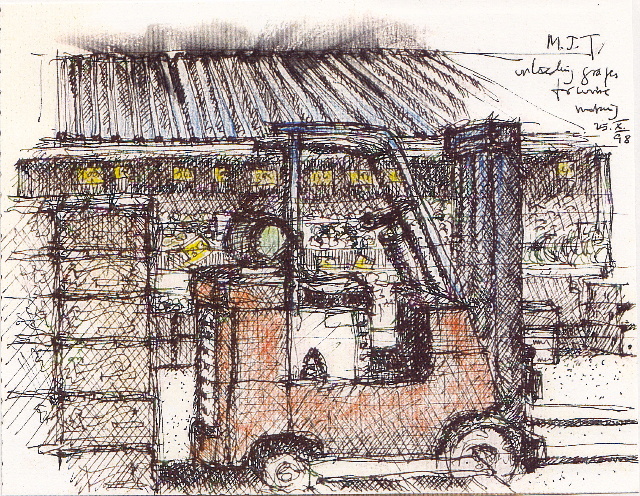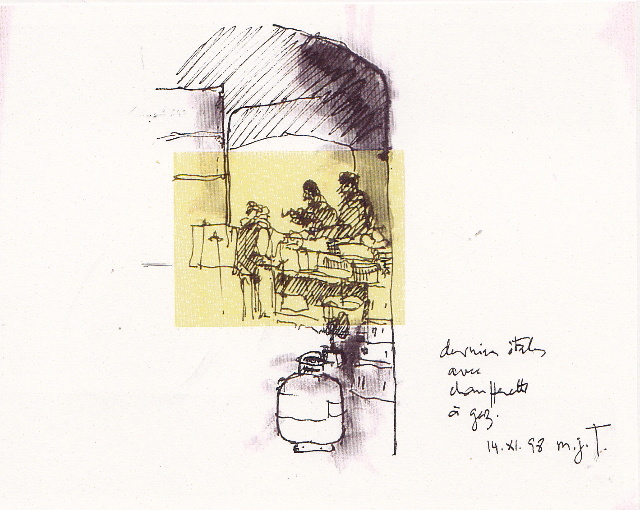A reminder, and an introduction.
The development of an outdoor public market in a northern city may seem counter intuitive. Yet the Swedish town of Lund, for instance, has one in the format of an indoor four-season venue adjacent to a public open space given periodically to the holding of a seasonal open-air market, when not used as a municipal parking lot or as platform for civic events.
In Montreal, the local agricultural economy added to the French-Latin tradition of public outdoor life are behind the development of its Public Market venues, each taking the socio-cultural character of adjacent neighborhoods.
The most identifiable Commons traits in Montreal’s Public Markets are the seasonality of their offerings, their flexibility of stall occupancy and design and the festive proprietary participation of sellers and clients in the life of “their” Public Market.
My last article covered the Jean-Talon Market’s environmental dimensions of display, signage, weatherproofing, marketing, design and urbanity. The following six dimensions complete the presentation of such elements, which I had the privilege to observe during four seasons, to record monthly with camera and sketchbook and to analyze in terms of social-spatial (environmental) dynamic
Elements of the market’s environmental dynamic (Continued)
7. Territories
Territories refer usually to spatially delimited areas for exclusive use and controlled access; to discuss them in relation to the spirit of Commons may seem contradictory.
In fact we are talking here of functional spatial organization rather than of territories as such, an organization aiming at preserving the separation of pedestrian areas with access to produce displays, from vehicular access to bring or pick bulk produce to or from stalls.
In reality the stalls display tables seamlessly flow into each other on the pedestrian side with pleasant banter between adjacent stall tenants, creating sometimes a confusion as to which display belongs to which stall occupant. Of course occupants know the limits of their numbered stall and use subtle means to mark them: location of signage, a heavy sack of potatoes at the outer corners of the stall, etc.
Pedestrians, drivers and tenants come to understand quickly that spatial organization as being one of front “presentation and sale of produce” and one of back “supply, bulk sale and treatment of produce,” with a few particular stall layout due to the many sided configuration of their end, or corner locations.
On that sketch we can see how the left stall has extended its “front” area beyond the protection of the awning and around the corner, onto what would be a “back” area available to car traffic (check recent photo of left stall below). On the right stall, the occupant has lowered a canvas partition, attached to the awning, thereby explicitly delimiting an interior “front” display area from a “back” one for storage of empty crates.
This situation illustrates a “functional” territoriality characteristic of the Commons spirit, rather than the “formal” defensive and controlling one of Property rights.
8. Seeing and touching
Shopping in a Public Market is of course a great social and sensorial experience with touch, sight and smell being privileged for appreciation of produce, and sight, smell, audition and interpersonal distance for appreciation of people.
The current trend toward pre-packaged produce in baskets of various sizes unfortunately discourages touching and smelling, and limits choice.
The bad apple at bottom of a basket does occur. The fine produce haphazardly piled up is a happy surprise. All in all, what guides the shopper is a matter of keen perception of produce quality as it is one of evaluation of commercial honesty and social sincerity.
In my sketch I tried to catch the appraising look from the lady about to move on, but extending her arm for a second attempt at choosing … taking a “second look” at my sketch I realize how viewing other shoppers across a produce laden table can now be found in those supermarket that have opted for a Public Market ambiance in their fresh produce section.
9. Positioning
The producer-seller is usually behind the produce display at an adequate distance to handle the produce and to hand back the change.
In a few particularly large end corner locations the producer-seller will opt for a supermarket-like layout, with the cash register being either at entry/exit points or in the middle of the stall. That option will require large signs with arrows and such pointing to their location.
Invariably the display area and the seller position are clearly elevated in relation to the pedestrian-shopper area. I suppose the psychological advantage of “oversight” may discourage shoplifting, and the practical advantage may be for the seller to clear the top of slanted displays at midriff, insuring visibility and produce-producer identification from a distance.
When this identification occurs on a first name basis it makes one feel like a “habitué” of the place, and makes the place feel like a Commons.
Marie, who sells Aline’s berries at stall #175, was kind enough to clue me in these fine points of positioning, in exchange for which I offered her the original of the sketch, respectfully signed of course!
10. Circulating
There is no square foot of ground and floor, free of circulation, that is not given to storing, displaying, treating produce and equipment.
There is not square foot of assigned circulation space that is not vied for by pedestrians, cars, forklifts, bikes, baby strollers, which makes for a lively ballet where all dancers go at the same speed. A kind of homogenization of movement takes hold of the Public Market.
When vehicles stop to pick up or deliver, or because they are simply parked where allowed, they may be overtaken by crates, or by what I have called “hit and run” displays, creating here and there small island-like mounds of wood and metal.
The Jean-Talon Market, and most others in the city, have now succeeded in developing distant parking areas, eliminating for the most part the smelly vehicle exhaust near stalls, particularly in high temperature and high humidity summer conditions.
We are describing here an outdoor market season situation; in winter the stalls and the cars are physically separated by a modular system of insulated enclosure with double doors to the outside for produce delivery and pick up by trucks, cars, etc.
11. Rituals
At peak harvest times, the Market is stocked roof height with grapes, tomatoes, pumpkins and bushels of local corn…and the forklift is king!
These times are understood as exceptional ones and the piled containers are taken away almost as fast as they are brought in. These are the times when winemaking or produce canning or pickling families show up in droves, with restaurant buyers right along!
A festive air overtakes the market as sellers shout the special qualities of their produce and shoppers haggle for large scale buying economies … of course in Italian, Portuguese, and whatever language the local ethnic niche is involved.
Corn harvest time is clearly the most local of these seasonal rituals with stalls offering freshly picked and on-the-spot boiled sweet corn in the cob with salt and butter, its unmistakable appetizing smell wafting through the market.
These I call the Public Market TOTAL experiences … looked for, attended to with gusto and long remembered by all ritual committed Commoners.
12. Season change
When November rolls along and the main body of the Market gets enclosed, some merchants will still informally use the market’s open and cold extensions, given otherwise to temporary storage and, in December, to Christmas tree selling.
It is not quite winter but my hands are numb from the biting cold and I elect to limit myself to a post-it sized area of my sketchbook.
People are huddled in their coats, scarves and woolens while a gas-fired heater warms the feet and area under the display tables.
The only considerations these late comers benefit from is the permission to squat. Who knows, they may be useful as living advertisement to the otherwise enclosed, and therefore hidden, busy winter life of the market!
Discussion
With Public Markets we are far from Commons-like Town Greens and Back Alleys that are inherently flexible spaces even when used. A Public Market, when used, has the trappings of a large compound with porous edges.
The mythic narrative of the Public Market is it being a farmer’s market, which it is only in parts, and specially during these seasonal peak harvest times when locally cultivated produce is on display and feted.
That narrative is the basic link I see to the Commons social-spatial set up: a commercial “stage” publicly owned and rented out to producers, or merchants, to sell to the public their produce in a collectivity conscious atmosphere, conscious that is of holding together something that holds the collectivity in return, in the same, and necessary, mutual relation basic to the spirit of the Commons.
Photo and sketches credit Maurice Amiel

